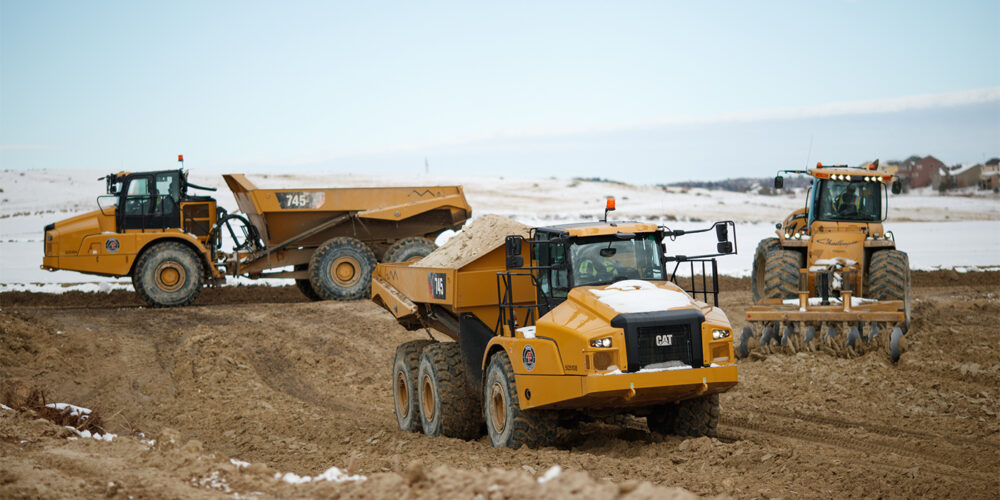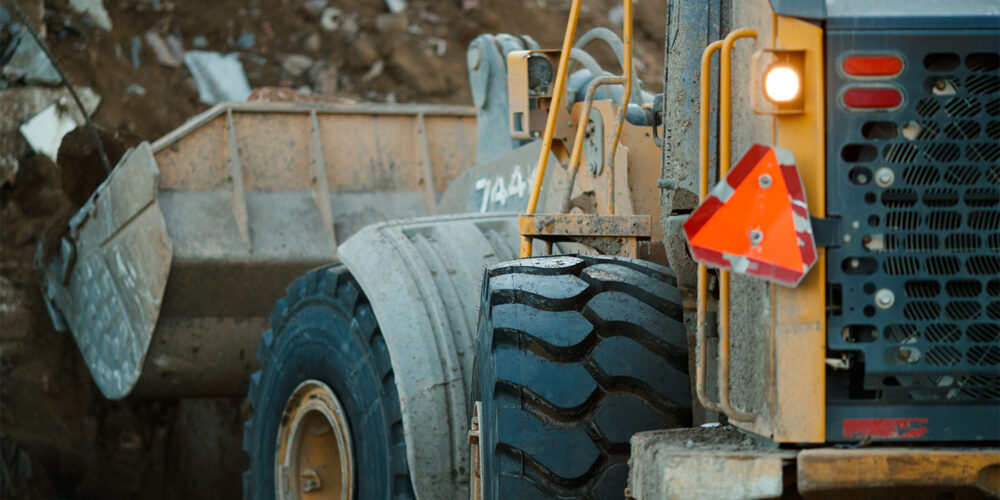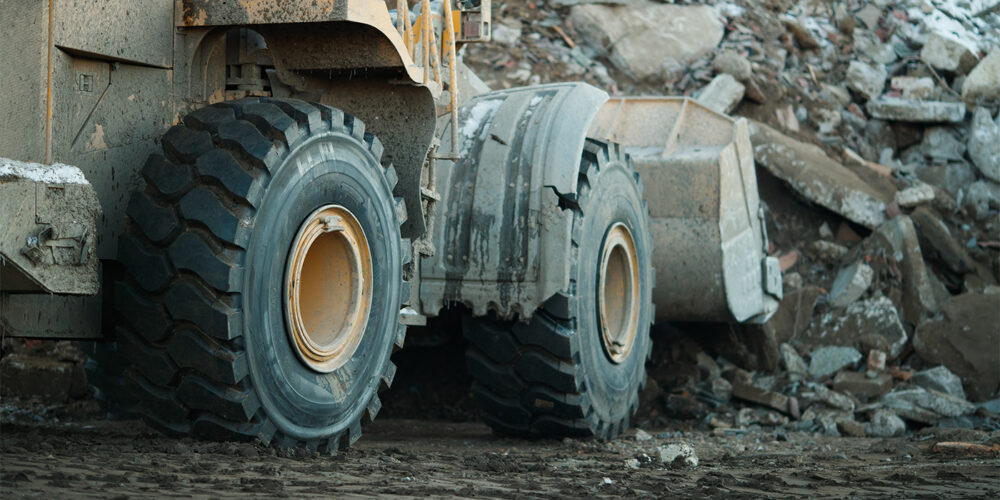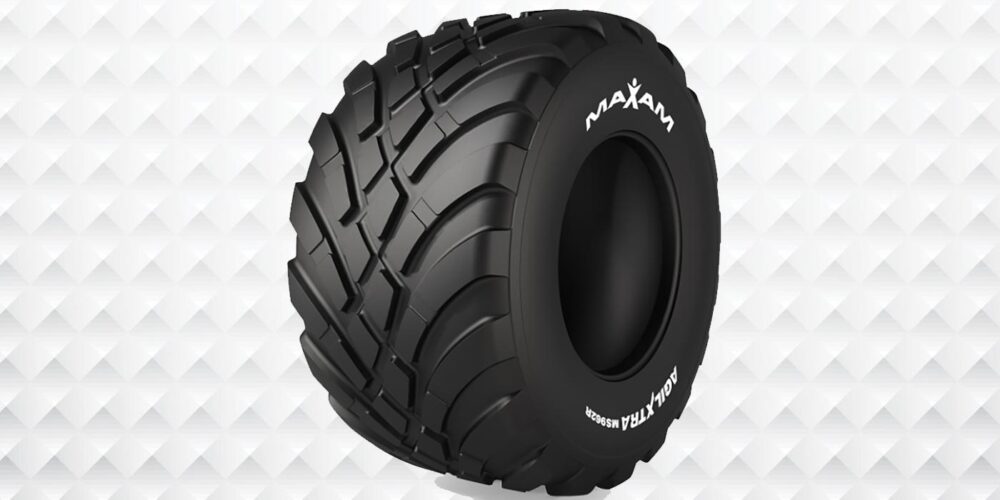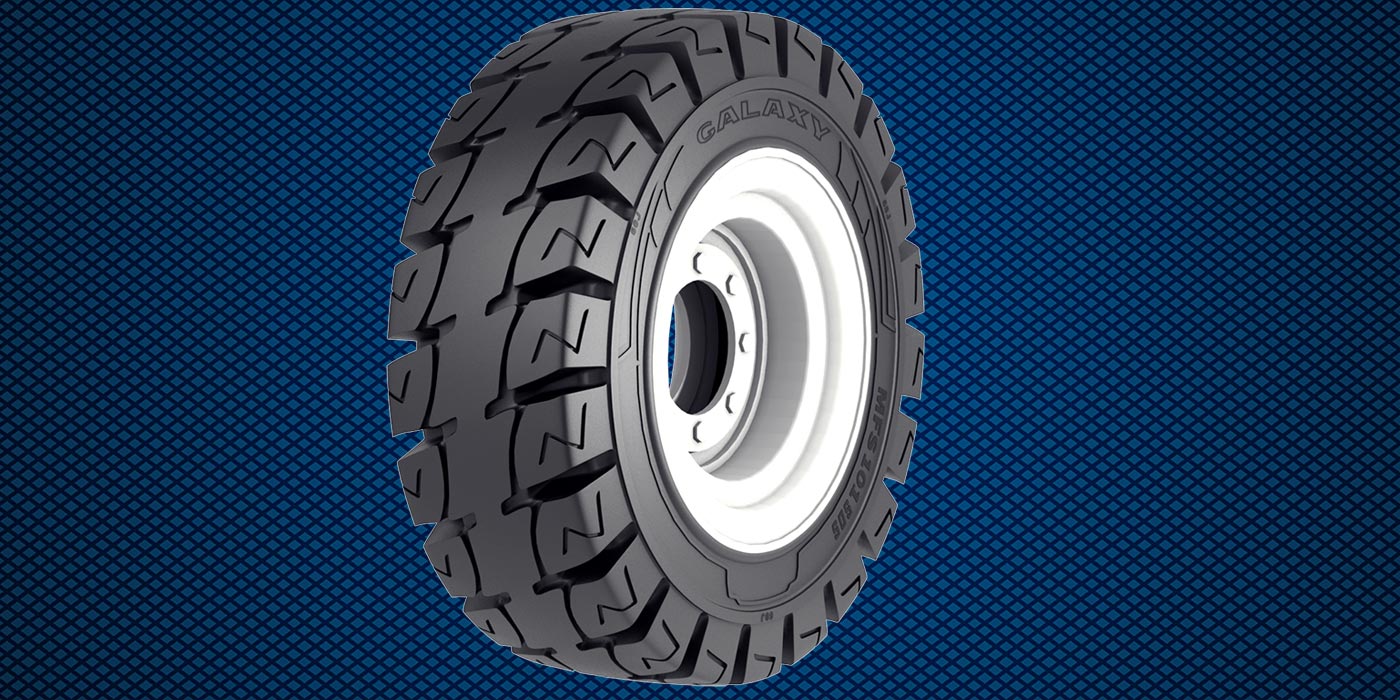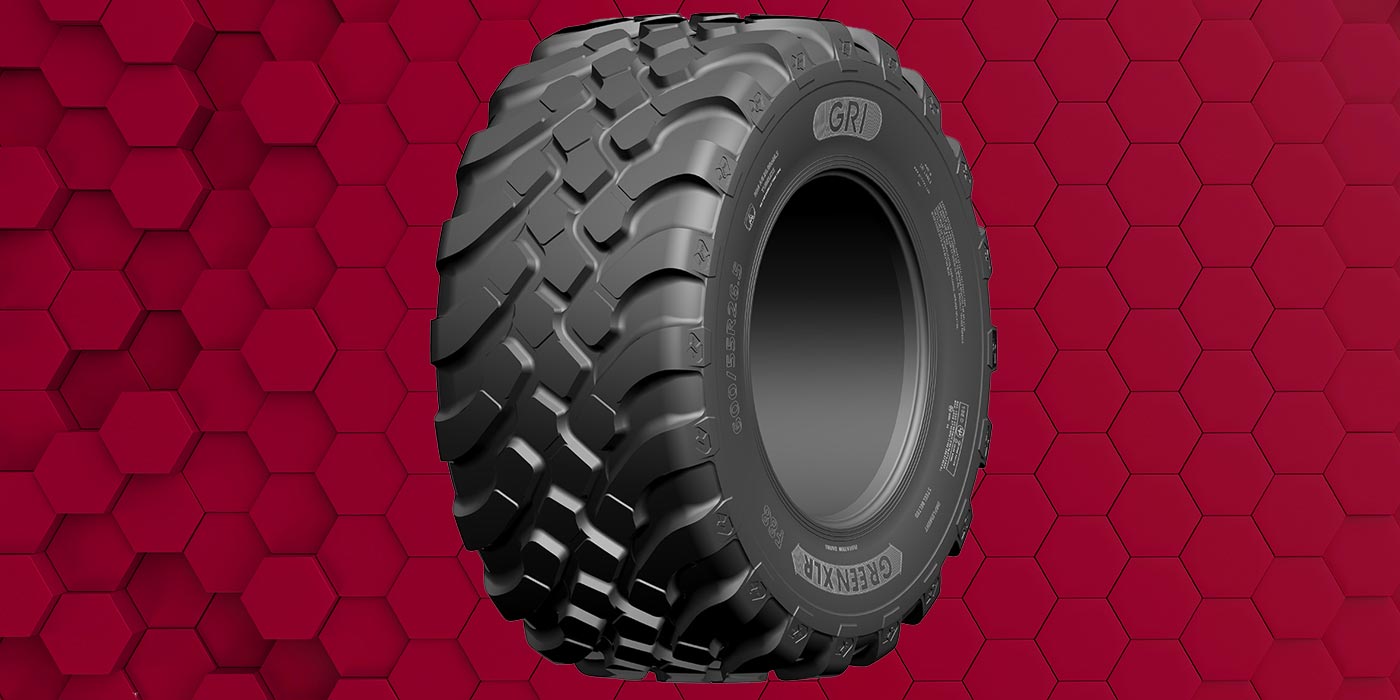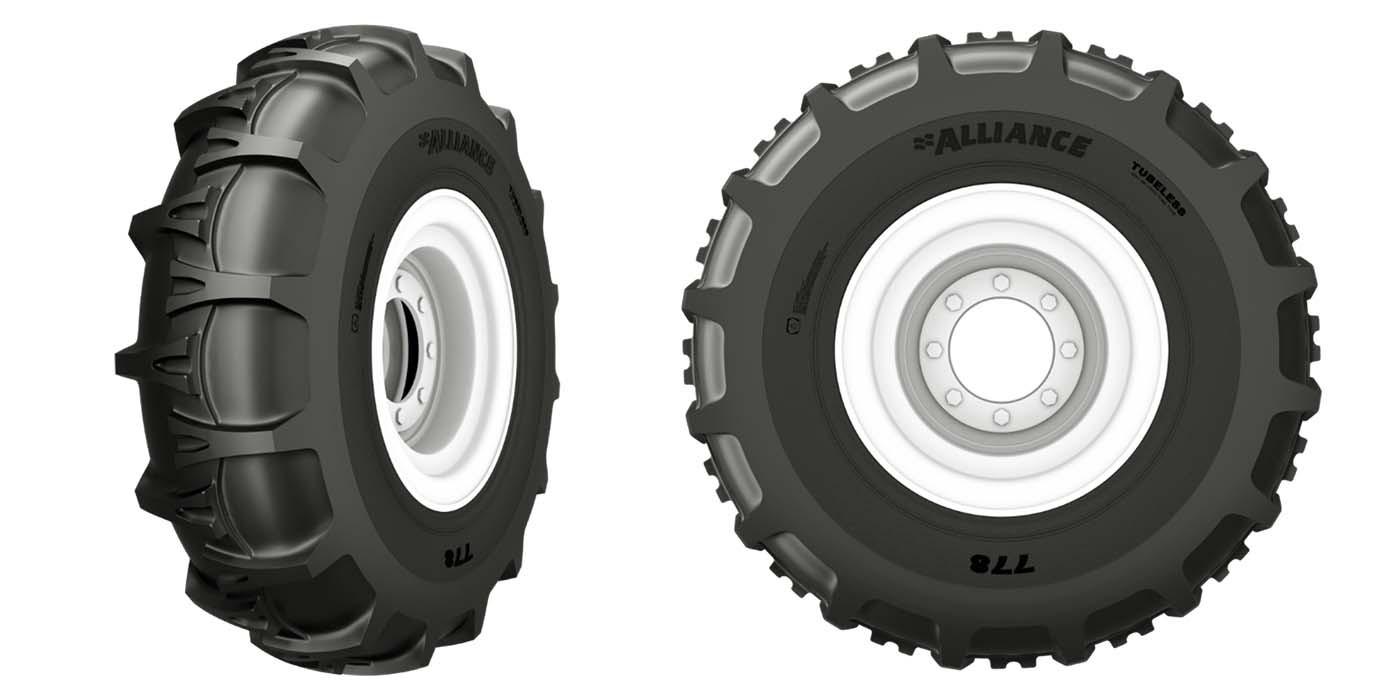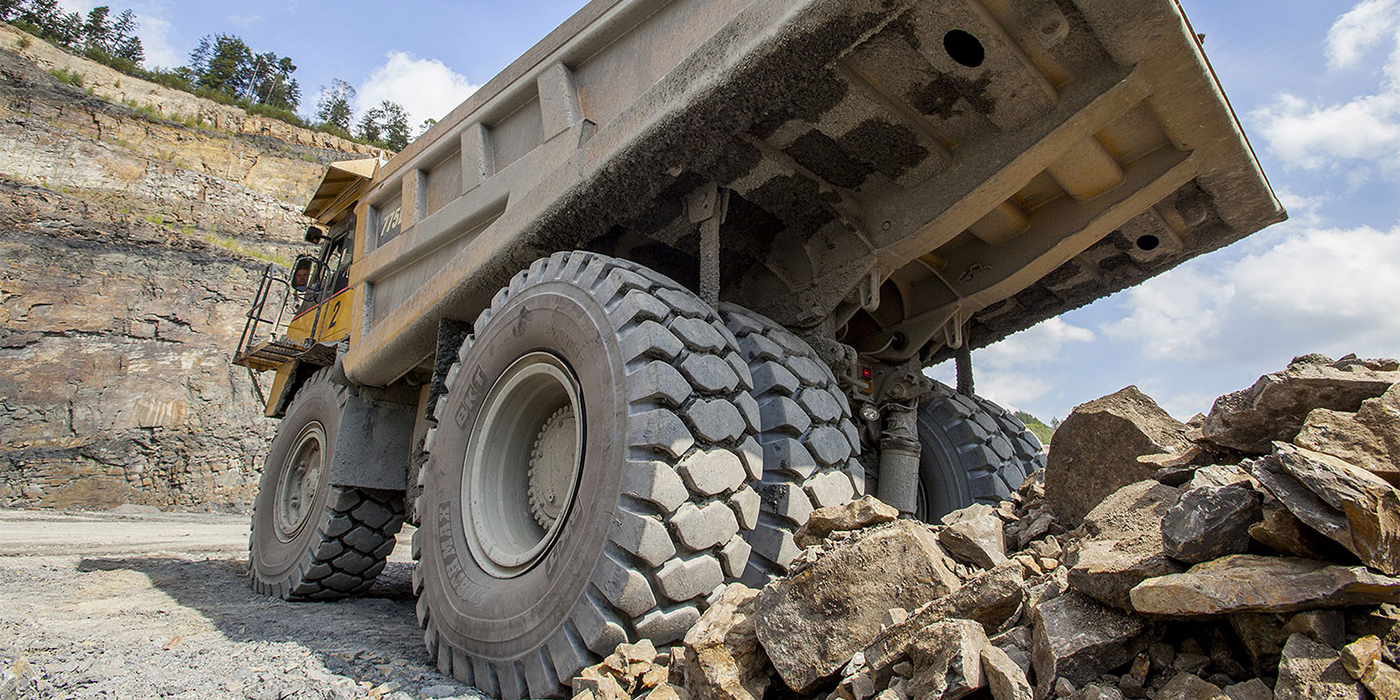In the fast-paced OTR construction segment, tire dealers must balance fluctuating market patterns and new technology with customer demands such as increased productivity, lower overall cost, and an edge over their competition. But informed, well-stocked dealers who are able to service customers at a moment’s notice will see success in this challenging market.
Tire Attributes
OTR (off-the-road) construction tires are versatile and hardworking, used in a variety of construction and industrial sites. Their rugged performance is a product of their technology and construction, from casing to tread.
“Having strong casing durability is important for integrity of the casing and the tire performing under tough conditions,” said Scott Holub, manager of OTR technical services for BKT. “Good compounding plays an important role in the design of construction tires. Having different compounding options like standard, cut-resistant and heat-resistant is essential in maximizing tire life for different applications.”
He noted that while normal conditions require standard compounds, abrasive conditions require a cut-resistant compound; heat-resistant compound is required when tires travel a longer distance at higher speeds.
Since construction machinery may be used in various aggregate materials from one job to the next, innovative tread patterns are key, according to Stephen Reynolds, OTR sales director for Triangle Tire USA.
“The idea is to provide reliable performance in any condition so that end users can maximize job-site productivity,” he said. “Also important is a sidewall design that enhances lateral stiffness, cut protection, and casing durability in haulage operations. Stiff sidewall construction provides stability and reduces bucket sway in loading operations. This increases operator confidence even when they are jumping into an unfamiliar machine that may be a rental or recently brought in from another construction site.”
According to Bruce Besancon, vice president of marketing for Yokohama Off-Highway Tires America, OTR construction tire manufacturing involves a combination of structure, tread pattern and compounding.
Structure includes some basic decisions — whether the tire is bias-ply, radial or solid — as well as more specific decisions on materials, such as the choice between steel, Kevlar or nylon. It also involves details like the width of specific fibers or the number of plies, Besancon said.
“Every decision on structure is based on its impact on weight, strength, heat, comfort, performance and cost,” he said.
“Tread pattern is probably the most immediately obvious decision because it’s so visual,” Besancon added. “Are we building a tread for greater protection, like a closed-faced pattern or slick, or for more traction? If traction is the goal, we want to consider the conditions, whether it’s a rocky environment, sandy soil, improved surfaces or snow.”
He referred to an OTR construction tire’s tread compound as the “secret sauce,” explaining it is vital for ensuring a long service life in the conditions tires face on construction sites.
“We’re always trying to minimize the trade-offs between cut-and-chip resistance and wear resistance,” Besancon said. “Beyond the tread compound, internal compounds reflect some of the most exciting advances in compound formulations. There we can make significant improvements in heat resistance, flexibility and the adhesion of plies, belts and other components. Those unseen technological advances are helping us manufacture tires that can handle heavier loads, longer cycles and 24-hour shifts.”
All this technology adds up to two essential features: durability and quality, according to Jimmy McDonnell, vice president of sales and marketing for Maxam Tire.
“Today’s end-users are pushing their equipment to be more productive and efficient, especially in this current economy of inflationary environment. Customers want quality construction tires that deliver the lowest cost per hour performance while delivering improved durability in harsh applications,” he said.
Recent Segment Trends
The pandemic, followed by a couple of years of uncertainty as markets leveled out, had a significant effect on global construction — and the OTR construction tire market, in turn. Currently, the segment is poised for growth as demand increases to meet growing construction needs.
“The pandemic has been a major obstacle to overcome,” Holub said. “It closed many tire manufacturing plants for extended periods of time, causing huge shortages in OTR products. Logistics also became problematic, creating shortages of containers and increasing the cost of shipping and the length of time for delivery.
“The inventory shortages had OTR dealers buying whatever tires they could get, at any freight rate the shipping companies were charging,” he continued. “As shipping conditions stabilized, the resulting inventory of high-cost overstocks carried over into this year, causing a slowdown in sales in Q1-Q2 of 2023 for many manufacturers.”
That slowdown is likely a thing of the past, as post-pandemic construction and mining has picked up the pace in an effort to make up for “lost time,” which has led to an increase in demand for equipment used in the construction industry, according to Reynolds.
“That key word — sustainability — has impacted the OTR construction segment as the focus on reusable/recyclable materials and composites continues to increase,” he said. “The goal is to reduce material demands and overall production costs. Tire manufacturers also continue to chase designs that allow for more lightweight and fuel-efficient tires. This helps reduce fuel consumption and contribute to sustainability efforts.”
Other trends in the segment involve shifting tire aspect ratios and different machines being used, as well as a focus on operator comfort.
“The movement to low-profile tire configuration, in particular the 65 series aspect ratio tires, has directly affected the OTR tire segment,” McDonnell said. “These tires can carry more load at lower tire pressures and provide better performance in terms of traction/floatation for higher productivity compared to their predecessors.”
Besancon said that while OEMs are designing larger machines, there is a tremendous amount of demand for machines that take 25-inch tires because much of the country’s construction is happening inside existing footprints.
“Equipment has to operate on sites between existing buildings, or between the shoulders of roads that were originally paved 60 years ago,” he said. “So while tire manufacturers are working on bigger tires for huge equipment, many of us are also innovating for the smaller machines that are doing the lion’s share of the work in a lot of situations.”
There also has been a growing appreciation for the importance of ride comfort — not just as a luxury, but as a factor in productivity, worker health and safety, and good labor relations, according to Besancon.
“Equipment manufacturers design machinery for comfort, governments in Europe are enacting mandates that limit whole-body vibration, and tire manufacturers can be important contributors to those efforts,” he said.
Future Growth Expected
Construction — and the OTR construction tire market — is expected to grow over the next few years, with U.S. government infrastructure spending serving as a boost.
“This is an exciting time in the construction tire market, and projections point to more than $2 billion in growth worldwide over the next several years,” Besancon said. “Here in the U.S., infrastructure spending and the need for housing create a bullish outlook for construction. We have seen a particular emphasis on road construction and maintenance, which engages a lot of construction equipment, from earthmovers and loaders to graders, dump trucks, compactors, pavers, water trucks, skid steers and more.”
The Infrastructure Investment and Jobs Act is set to provide for $1.2 trillion in spending, $550 billion of which will be new federal spending to be allocated over the next five years.
This will support various infrastructure projects like roads, bridges, public transit, water and energy, according to Reynolds.
“I’ve seen experts estimate that the legislation could result in as much as a 3.5% to 5% increase in construction spending between now and 2025,” he said. That’s about two percentage points above what would have been spent without the bill. It’s hard to say if that will translate to similar increases for tire demand, but it’s safe to say that slow, steady growth is in store for our industry.”
McDonnell noted that while modest growth is anticipated, the infrastructure bill seems to be delayed in getting into the market.
“The market was supposed to see this growth in 2023, but we are seeing it being pushed to release in 2024,” he said.
Holub agreed with that sentiment, saying, “It has been a slower process than was expected. It was hoped that the Build Back Better plan would be an immediate boom to the construction industry, but the reality has been a slow process of getting projects rolling. Over the next couple of years, the bill should gather momentum and add much-needed work.”
You can read more on how tire dealers can stay competitive in the OTR construction tire market here!

